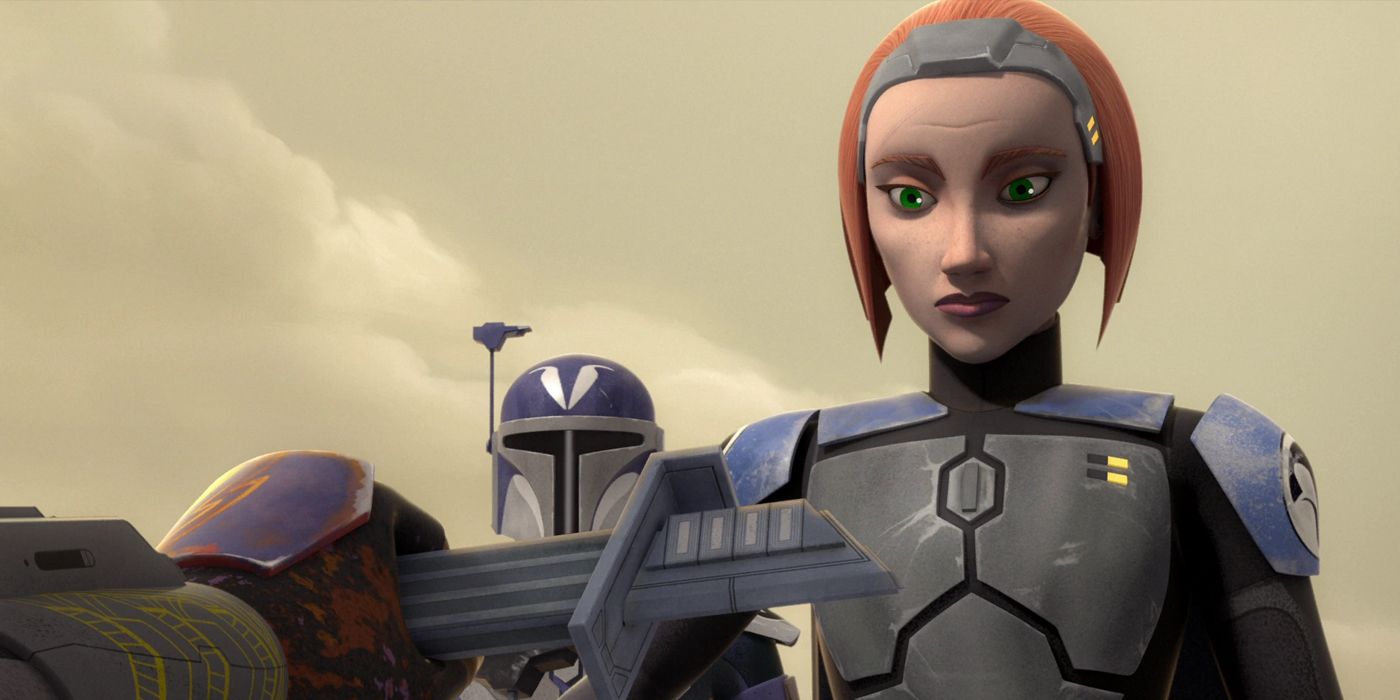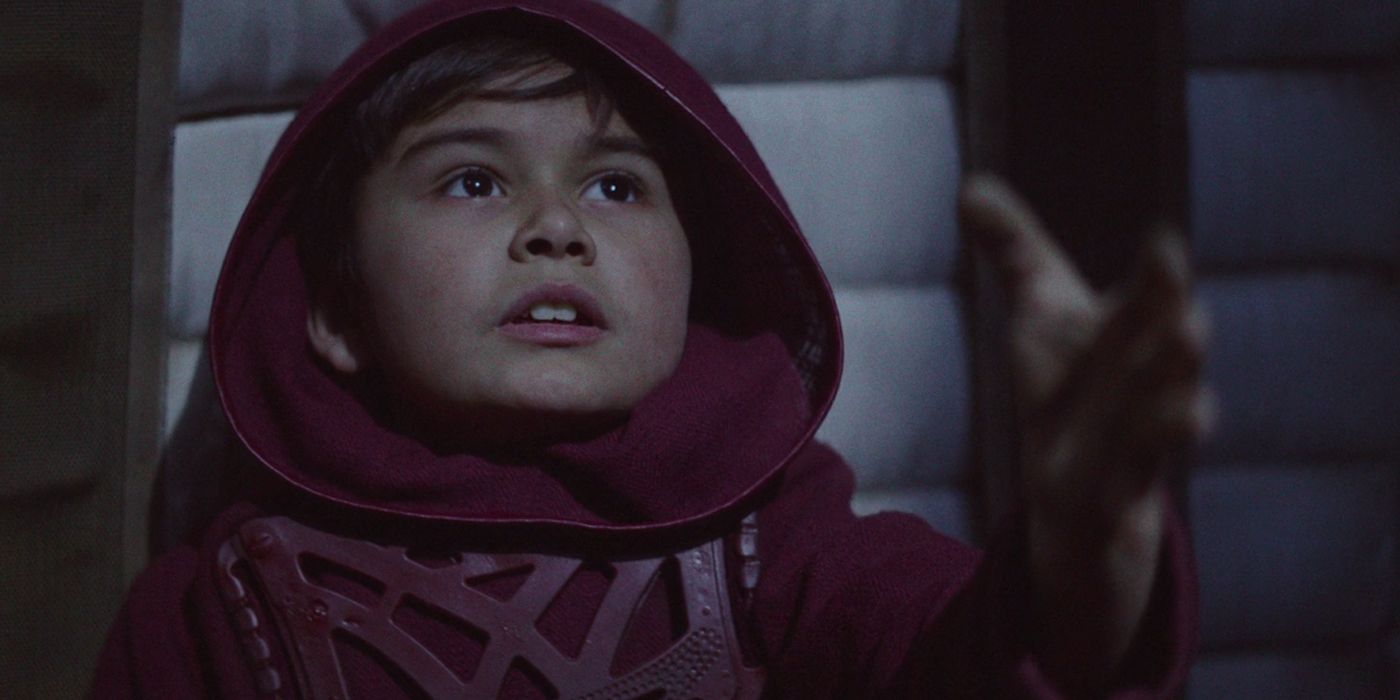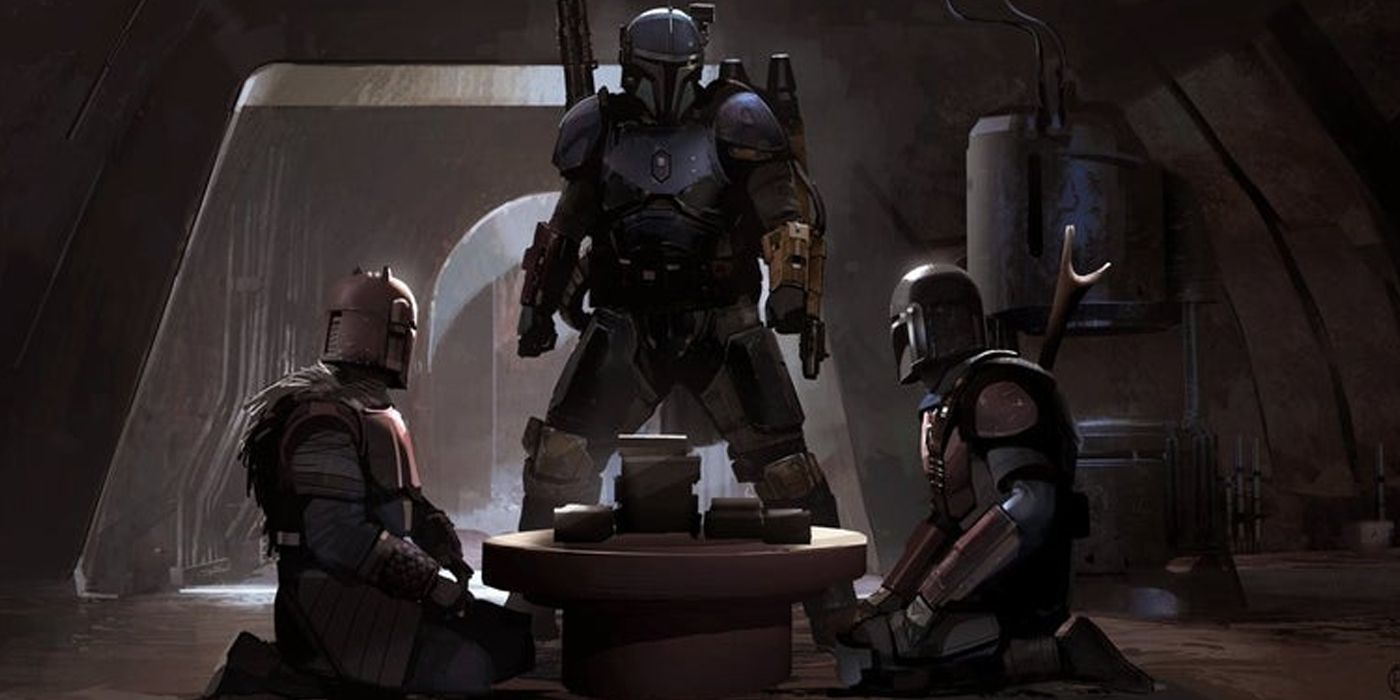
When The Mandalorian, was first announced, speculation was rampant that the Disney+ Star Wars show would fill in some blanks about the mysterious warrior culture of the Mandalorians. First introduced via the bounty hunter Boba Fett in The Empire Strikes Back, the Children of Mandalore have, for the most part, been shrouded in more questions than answers. And for better or worse, that’s a tradition the new show proudly keeps.
Prior to the debut of The Mandalorian last month, the most recent canonical exploration of the Mandalorian culture occurred in Star Wars Rebels, the Disney XD animated series that took place in the years immediately prior to the original trilogy. Over that show's four seasons, significant time was spent following exiled Mandalorian Sabine Wren as she tried to return to the fold and rally the disparate Mandalorian clans to the side of the burgeoning Rebellion.
Fans of both shows might notice some inconsistencies and flat-out contradictions, especially as regards proper helmet etiquette. Given the general tightfistedness of the greater Star Wars canon, the pedigree of the names behind the cameras, and, specifically, Rebels creator and Mandalorian executive producer Dave Filoni’s involvement in both shows, this seems less like an intentional change instead of an oversight.
Taken together, all of this begs the question, what exactly happened to the Mandalorians between Rebels and The Mandalorian?

When last we left the Children of Mandalore at the close of Rebels’ run and only about a year before the events of the original trilogy, Sabine and friends had successfully managed to reunite her people under one ruler. Multiple clans had come together behind Bo-Katan Kryze, Mand'alor and wielder of the Darksaber. A few, like the surviving members of Clan Saxon, were, presumably, still working as Supercommandos for the Empire, but, overall, things were looking pretty good for the Mandalorians.
By the time The Mandalorian kicks off, though, a few years after the events of the original trilogy, the entire Mandalorian culture has seemingly been decimated and sent into hiding, with even more draconian rules placed upon them than before. Hints of some kind of Purge, and the looting of Mandalorian reserves of beskar steel, perpetrated by the Empire, have been offered, but little in the way of concrete facts have been given.
Over about 10 years, the resurgent Mandalorians, working in tandem with the (ultimately successful) Rebellion, are somehow all but annihilated by the Empire and then seemingly abandoned by the New Republic. This leads to the survivors – including the titular bounty hunter of The Mandalorian – to double-down on their isolationist tendencies and fanaticism as a result.
The Purge is probably the easiest piece of this puzzle to suss out. It’s not hard to imagine that the Empire turned the might of its war machines on the Mandalorians and wiped most of them out. The looting of beskar would also seem to imply that the Mandalorian homeworld, Mandalore, was also devastated, if not outright obliterated.
It certainly wouldn’t be the first time. Rebels explained how the Empire turned a beskar-incinerating superweapon against the Mandalorians once already, and attempted a repeat performance, only to be thwarted by Sabine and Bo-Katan. It’s not out of the realm of possibility, then, that the Empire tried a third time and succeeded –especially not with the Death Star in play and most of the factions allying themselves with the Rebels.
Even the Supercommandos working for the Empire wouldn’t necessarily have been spared. As pointed out by Rebels and numerous other sources, the Empire has a history of turning on its allies when it no longer needs them. The Imperials all but wiped out the Geonosians and deactivated most of its droid armies following the Clone Wars, as well as deactivating (most of) its droid army. In addition to the conjectural evidence of the Mandalorians mentioning the Purge, the existence of Imperial-marked ingots would seem to confirm at least part of the above.
While the number of real Mandalorians seemingly plummeted, imposters like Boba Fett and Cobb Vanth rose up in their place, and there may be even more Mandalorian imposters than actual Mandalorians in the galaxy. That's why the krill farmers in The Mandalorian questioned whether or not the titular bounty hunter was even a real Mandalorian.
However, none of that explains why Mandalorian culture has changed so much.

Without rehashing all the intricacies of Mandalore and its people,Mandalorians were separated by clans and prone to civil wars, but they all still adhered to a few key principles, including that of their armor being sacred, a proficiency with weapons and mechanics and a general distrust of outsiders.
With that in mind, the Armorer shouldn't exist, given what we know about Mandalorian culture. Early on in Rebels, Sabine explains to Ezra that her Mandalorian armor was made for her – and this is the important part – by her. She forged it herself, because a Mandalorian’s armor is sacred and letting someone else tamper with it is sacrilegious.
Beyond that, the Mandalorian may not be as skilled at engineering as he should be. In “The Child,” he complains about how long it’s going to take to fix his ship after Jawas destroy it. In the Rebels episode, “The Lost Commanders,” meanwhile, Sabine is recognized as a Mandalorian by her armor, presumed to be a skilled engineer, and then asked to help fix some a walking-machine on the fly, all of which she does, without question or complaint.
Additionally, the idea of Foundlings complicates matters. Previously, the notion of outsiders being adopted into the Mandalorian culture was frowned upon, at best. Jango and Boba Fett were reviled for this very reason, and while Darth Maul led the Death Watch clan astray, there’s no actual mention of him being adopted in as a true Mandalorian. So the fact that there’s now a term and a general degree of acceptance for the concept is weird if nothing else. However, it's worth noting that the heavy trooper, credited as Paz Vizsla, who confronts our Mando in the Armorer’s room, isn’t too fond of Foundlings, which suggests at least some of the old grudges still exist.
As Screen Rant noted. the idea of Mandalorians not being able to remove their helmets in public is both new and unprecedented. Sabine and Gar Saxon and pretty much every other Mandalorian that ever appeared on Rebels or The Clone Wars took off their helmet, which makes Mando’s statement that he hasn’t taken it off since he was a child somewhat concerning – and confusing.
Our Mando’s flashbacks seem to indicate that he was a child during the Clone Wars, attacked by Separatists and then, by his own admission, adopted by the Mandalorians. That strongly suggests that he was actively involved in the Mandalorian culture, and not taking off his helmet, during the timeframe of Rebels – openly contradicting our best source for Mandalorian lore.
With that in mind, why are The Mandalorian’s Mandalorians so different from all the others we’ve ever seen?

The most obvious answer is that our The Mandalorian's clan is a smaller but long-standing fundamentalist sect. This would easily explain the inconsistencies between Mando’s clan and the other clans we’ve previously seen, why Sabine never brings them up, how the clan survived the Empire’s Purge, and the decidedly cult-like mantra of “This is the way.”
This theory also explains why the New Republic seems to have turned their backs on them – or, maybe, why they turned their backs on the Republic. The Rebellion, after all, wouldn’t do that since Sabine Wren so instrumental in its formation.
Of course, it’s also possible that these really are the only Mandalorians left. That would certainly explain the hiding. Multiple clans coming together to create a brand new one would explain the friction between different members. And a reassertion of new and stricter rules, to force the disparate Mandalorians together as a cohesive unit without favoring any older clans, would also make sense following a calamity.
And let’s not ignore the fact that they could all just not be true Mandalorians at all. As mentioned earlier, casually bringing up “stolen armor” certainly suggests that this kind of theft is not an uncommon occurrence. Plus, this would explain our Mando’s less than stellar engineering and aim, the flaunting of established Mandalorian norms and the extremely cult-like energy.mWith only four episodes left in the first season, hopefully The Mandalorian will offer up a few more answers before it ends.
Created by Jon Favreau, The Mandalorian stars Pedro Pascal, Carl Weathers, Gina Carano, Werner Herzog, Nick Nolte, Emily Swallow, Omid Abtahi and Giancarlo Esposito. New episodes premiere weekly on Disney+.